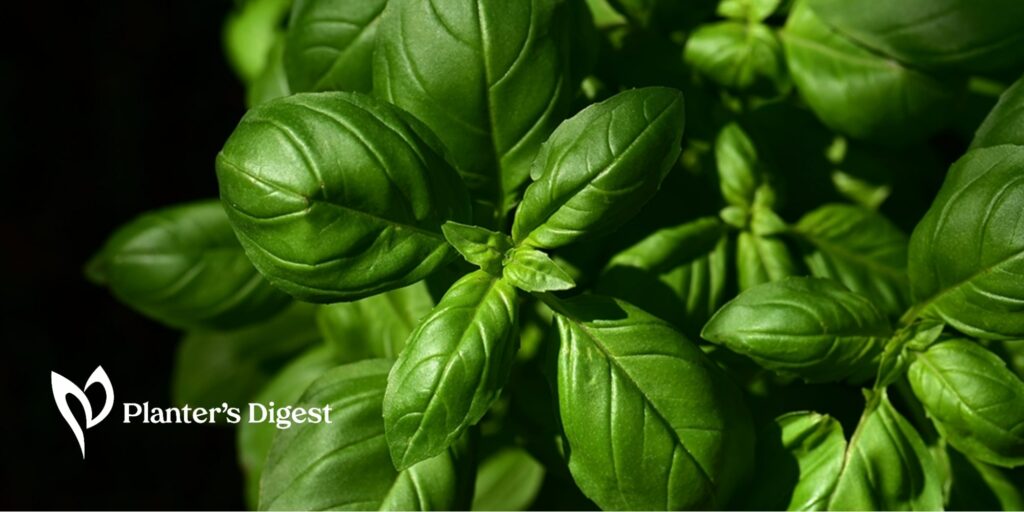Many basil varieties have floral, sweet, or peppery scents – sometimes in combinations of two or more. Some basils also smell like licorice or lemon, while others have a scent reminiscent of cat pee (oops).
The diversity in basil fragrances is due to specific compounds in the plants, such as mercaptan, anethole, citral, and cinnamate. Some of these compounds can be introduced externally, while others occur naturally in particular basil varieties.
We’ll start with the olfactory properties of basil and then deep dive into the different varieties and how to use this precious herb. Ready? Let’s go!
Why do basil smells vary?
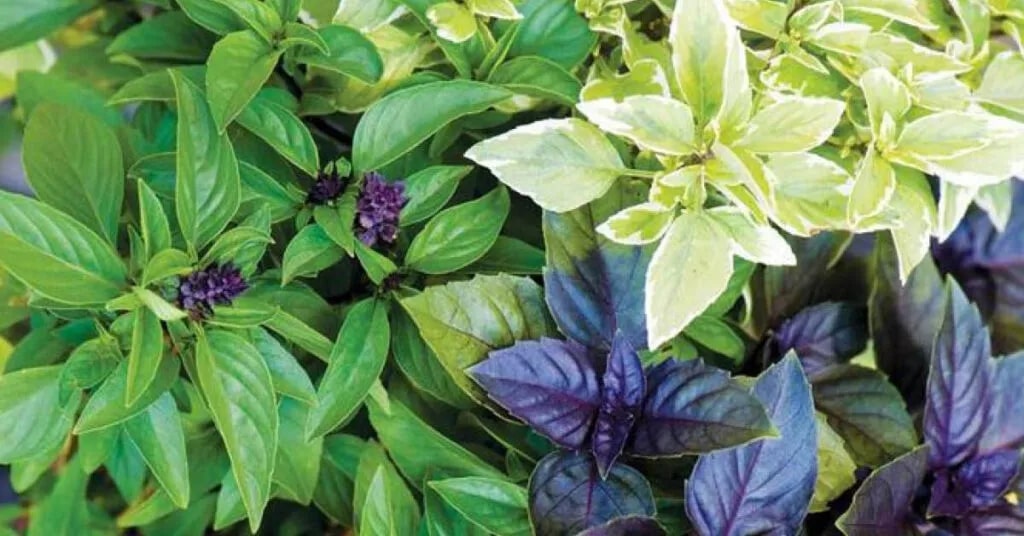
Different varieties of basil to illustrate that each has different scents from the other.
Basils vary in smell due to genetics, environmental factors, harvesting time, and growing practices. Let’s take a quick look at each factor before we get to the heart of the herb.
Genetic Variations
There are various basil varieties, each with unique genetics, affecting their essential oil content and resulting aroma. As mentioned, sweet basil has a sweet-peppery scent, Thai basil is spicier with a licorice-like aroma, and lemon basil offers a citrusy fragrance.
Environmental Factors
The environment, including climate, soil quality, and cultivation methods, also affects basil’s aroma. The climate in which basil grows can affect its fragrance, with warmer regions often producing a stronger scent.
Soil type and nutrient availability influence basil’s aroma, with nutrient-rich soil yielding more aromatic basil. Sunlight boosts basil’s essential oil development and aromatic compounds, resulting in a more fragrant plant.
Harvesting Time
Basil is most fragrant just before flowering. Harvesting before flowering ensures a robust aroma, while waiting too long directs the plant’s energy toward seed production, diminishing the leaves’ aromatic potency.
Growing Practices
Organic cultivation often results in a purer and more intense scent due to the absence of synthetic chemicals. Hydroponically grown basil may have a different aroma compared to soil-grown basil.
Why does basil smell like cat pee?
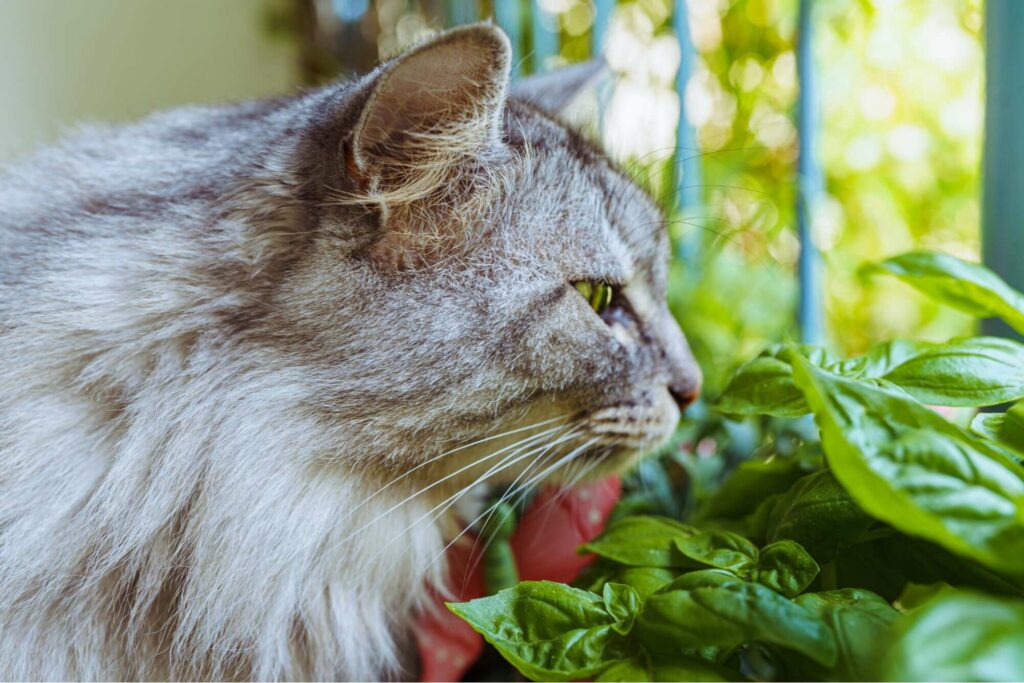
Your basil smells like cat pee for genetic reasons. It’s also possible that the basil plant you are growing may not be of the culinary variety – hence its odd smell.
The last reason could be that a cat possibly urinated on your basil plant. In this case, watering the soil under the plant to dissolve the ammonia.
However, be mindful. Because in this case, no matter how much you love your pet cat, you cannot consume the basil.
Both cat urine and feces (that might be on your plant even if not visible) can cause serious problems. If you find urine in your plant it’s very likely that a cat is using your garden or pot as litter and you’d be better off making your basil inaccessible to pets.
Why does basil smell like lemon?
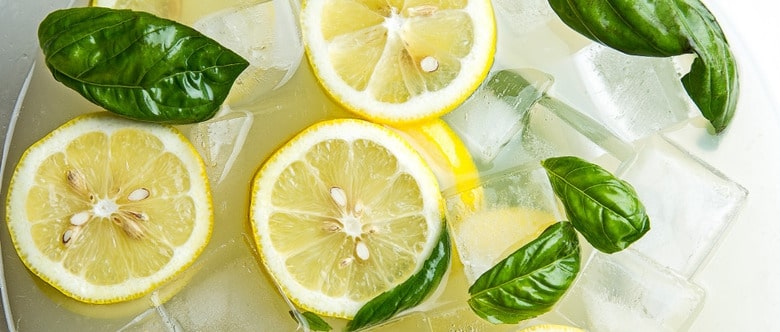
Some basil smell like lemon due to a compound called citral. Citral is responsible for the lemony or citrus-like aroma and flavor.
Lemon basil, as the name suggests, contains relatively high levels of citral, giving it a distinctive lemony scent.
Why does basil smell like licorice?
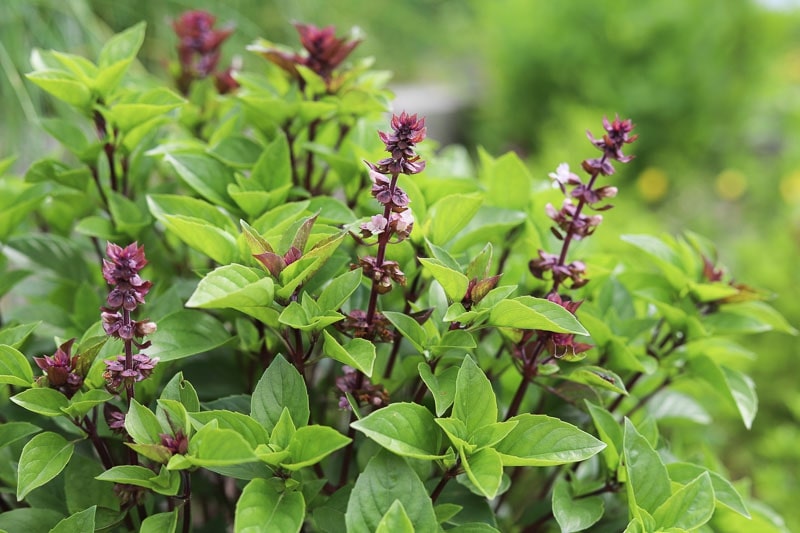
Basil sometimes smells like licorice due to a compound called anethole. Anethole imparts a licorice-like flavor and scent to many plants, including basil.
Although it’s often linked with herbs like anise and fennel, some basil varieties, like Thai basil, may have trace amounts of anethole.
Why does basil smell like cinnamon?
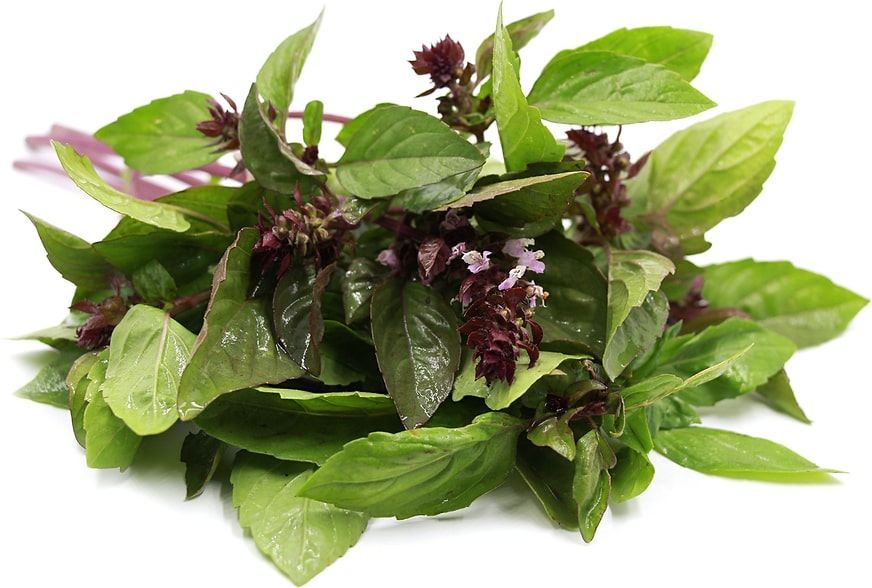
Basil smells like cinnamon due to cinnamate. It’s a compound found mostly in cinnamon but may also be produced by other plants.
Cinnamate, including cinnamic acid and its derivatives like cinnamate esters, can contribute to the aroma of various herbs and spices. Basil does contain small amounts of cinnamic compounds, but it’s not a primary source of cinnamate.
What gives basil its unique smell?
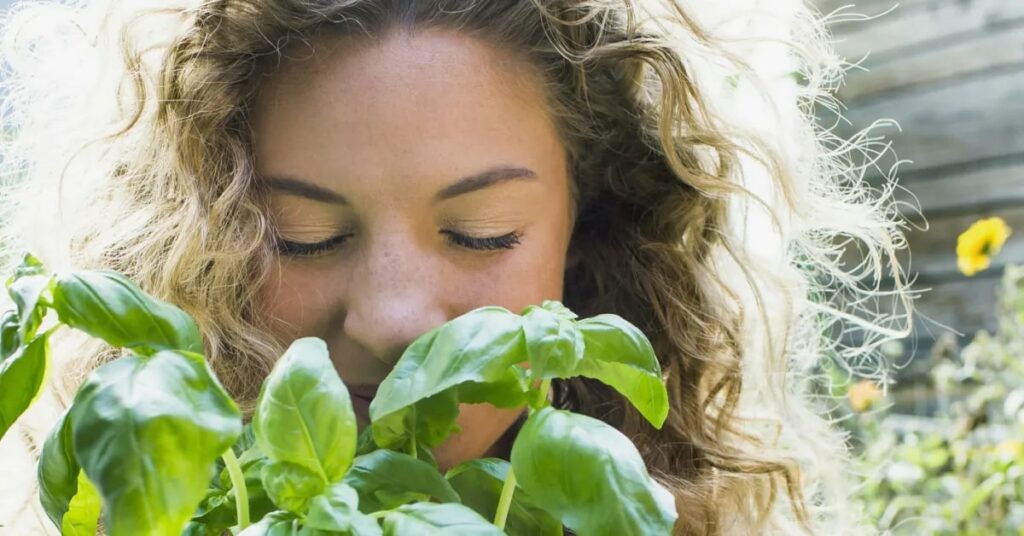
Basil is rich in essential oils such as eugenol, linalool, anethole, citral, and cinnamate, which are responsible for its pleasant aroma. Plus, varieties will tend to have one or more combinations of oils that are stronger than others.
Eugenol
This compound contributes a warm, spicy, and slightly clove-like scent to basil. It’s the same compound that gives cloves their strong, sweet-spicy fragrance.
Linalool
Linalool adds a subtle floral note to basil’s scent, which is also found in lavender and is known for its calming properties. When you smell basil, you’ll notice these floral undertones blending with the stronger eugenol scent.
Varietal Influences
The scent of basil can differ based on the type you’re using. Looking at the chemical compounds naturally found in basils, some varieties can have more of one or more than others.
On the flip side, some may lack or have low levels of one or more. Sweet basil, the most common, has a balanced sweet-peppery aroma.
Thai basil is often used in Asian cuisines, and it’s probably a smell that’s a bit more familiar to foodies. It has a spicier, licorice-like scent due to more estragole.
Lemon basil, as the name suggests, has a citrusy fragrance. It’s great for salads and seafood, thanks to its higher citral content.
Holy basil, also known as tulsi, is used a lot in Ayurvedic medicine. It has a clove-like aroma from its abundant eugenol content.
Now, not all basils are beloved for their scents. Boxwood basil is frequently associated with a strong pee-like odor from feline friends, thanks to the strongly-scented compound mercaptan found in many varieties.
However, you have to take note as well that some people respond differently to certain compounds. The same basil variety may have subtler and more nuanced differences between two people sniffing at the plant.
Popular Types of Basil
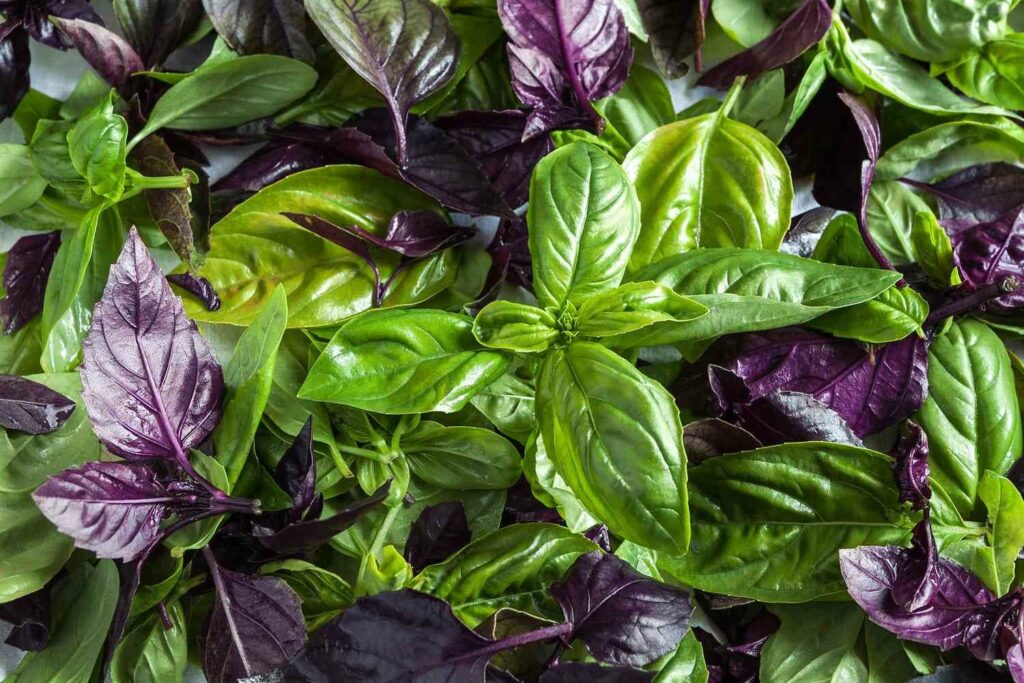
Another illustration of various types of basil.
Let’s take a quick peek into 10 of the most popular basil varieties. Who knows, you just might get inspired to grow and use them for your dishes, teas, and even as pest repellents!
Sweet Basil (Ocimum basilicum)
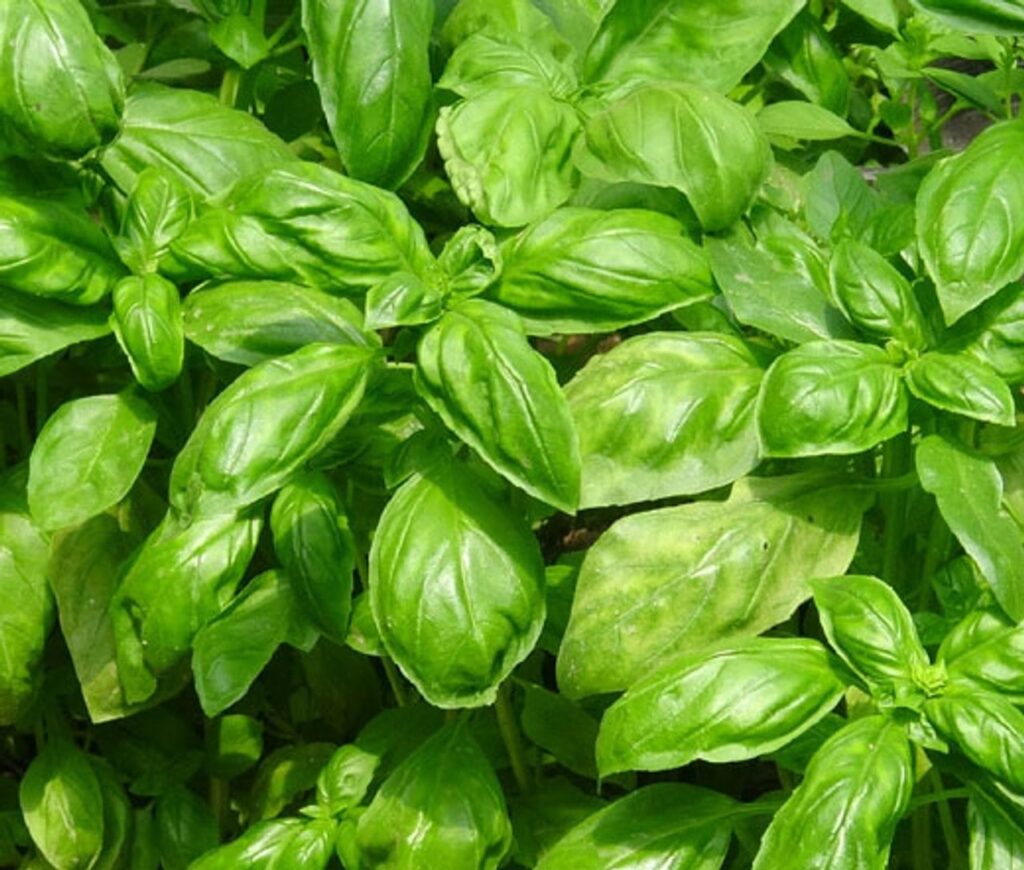
| Factor | Description |
| Ease of Growth | Easy ●○○○○ |
| Scent / Fragrance Profile | Sweet and slightly peppery scent. |
| USDA Zone | Zones 4 to 10 |
| Height and Width | Grows to about 12-18 inches in height and 12-15 inches wide |
| Growth Rate | Moderate growth rate |
| Indoor or Outdoor | Ideally grown outdoors but can be cultivated indoors in pots |
| Propagation | Propagated from seeds or cuttings |
| Possible Issues | Susceptible to basil downy mildew and aphids |
The classic basil variety, known for its sweet, slightly peppery scent. It’s the familiar basil used in Italian dishes and pesto.
Thai Basil (Ocimum basilicum var. thyrsiflora)
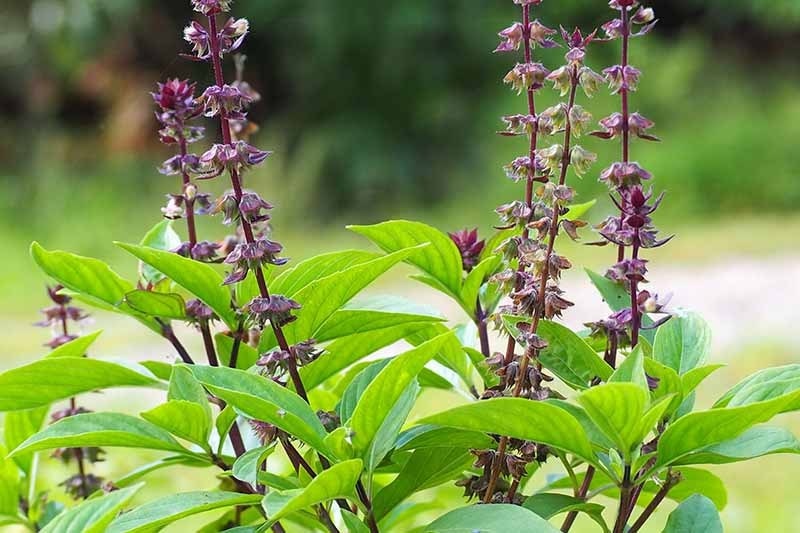
| Factor | Information |
| Ease of Growth | Moderate ●●○○○ |
| Scent / Fragrance Profile | Spicy, licorice-like with a hint of anise |
| USDA Zone | Zones 9 to 11 |
| Height and Width | Grows about 12 to 18 inches in height, 18 to 24 inches in width |
| Growth Rate | Moderate |
| Indoor or Outdoor | Suited for outdoor cultivation, can be grown indoors |
| Propagation | Propagated from seeds or cuttings. |
| Possible Issues | Susceptible to downy mildew, aphids, and slugs |
Thai basil offers a spicy, licorice-like aroma with a hint of anise. It’s a key ingredient in Thai and Vietnamese cuisine.
Lemon Basil (Ocimum basilicum var. citriodorum)
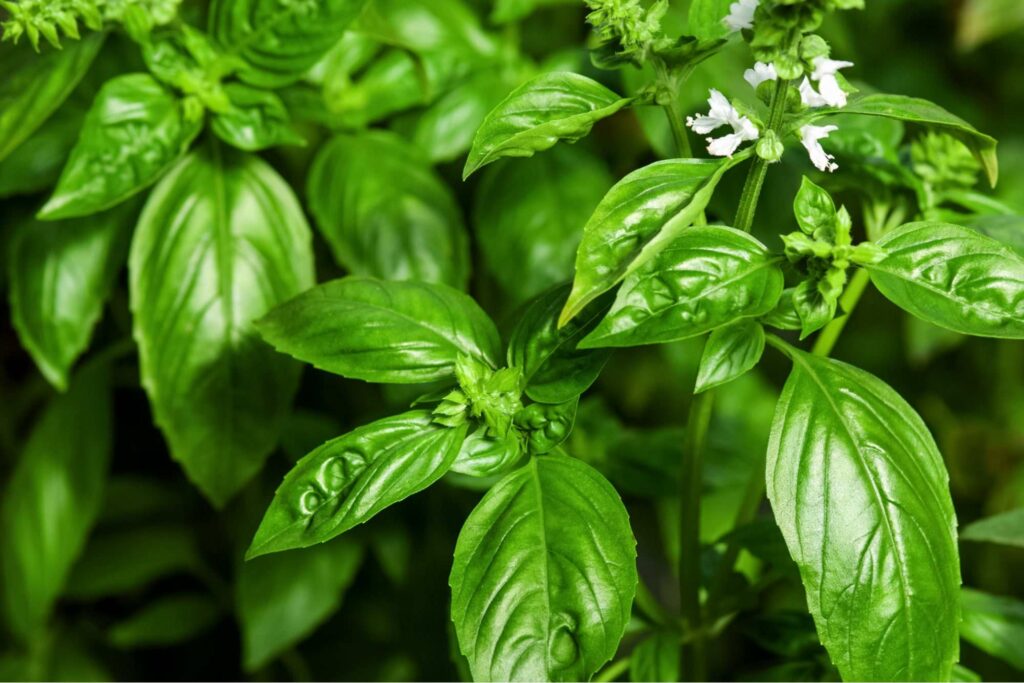
| Factor | Information |
| Ease of Growth | Easy ●○○○○ |
| Scent / Fragrance | Bright, citrusy scent, true to its name |
| USDA Zone | Zones 9 to 11 |
| Height and Width | Typically grows 12 to 24 inches in height, 12 to 18 inches wide |
| Growth Rate | Moderate growth rate |
| Indoor or Outdoor | Suited for outdoor cultivation, can be grown indoors |
| Propagation | Propagated through seeds or cuttings |
| Possible Issues | Prone to aphid infestation, particularly in crowded conditions |
If you’re looking for a bright, citrusy scent mixed with a bit of herbiness for white meats, then the lemon basil is perfect for seafood and salad dishes.
Holy Basil (Ocimum sanctum or Ocimum tenuiflorum)
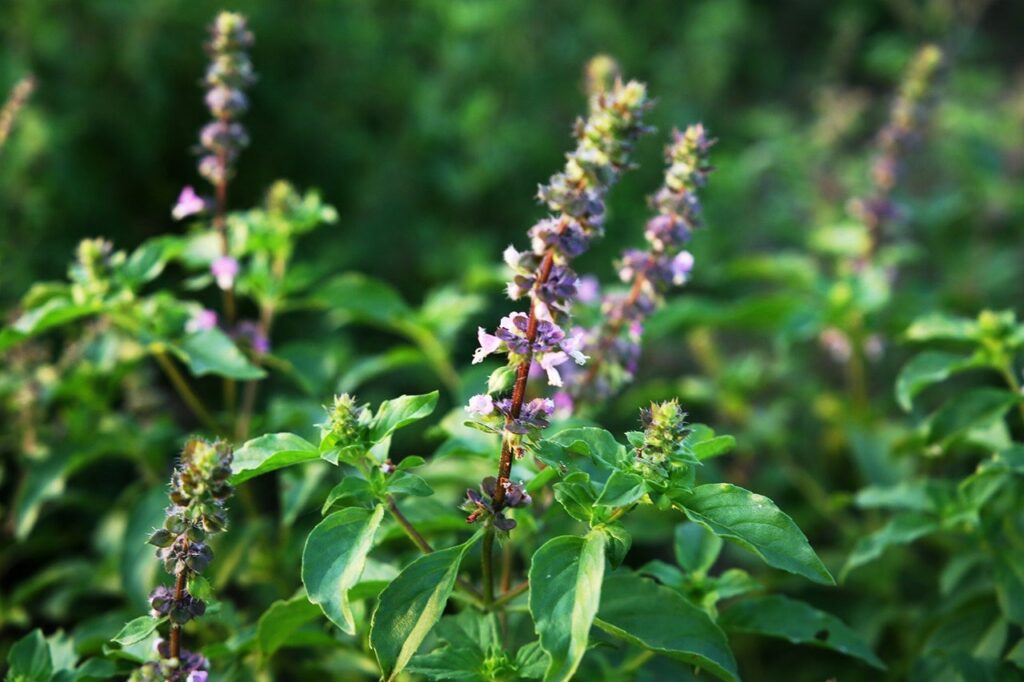
| Factor | Information |
| Ease of Growth | Easy ●○○○○ |
| Scent / Fragrance | Peppery, clove-like aroma with a hint of citrus |
| USDA Zone | Zones 10 to 12 |
| Height and Width | Typically grows 18 to 24 inches in height, 12 to 18 inches in width |
| Growth Rate | Moderate growth rate |
| Indoor or Outdoor | Suited for outdoor cultivation, can be grown indoors in containers |
| Propagation | Propagated through seeds or cuttings |
| Possible Issues | Susceptible to aphids and whiteflies, may need protection from frost |
Also known as Tulsi, holy basil has a peppery, clove-like aroma with a hint of citrus. It’s revered in Ayurvedic medicine.
Purple Basil (Ocimum basilicum var. purpurascens)
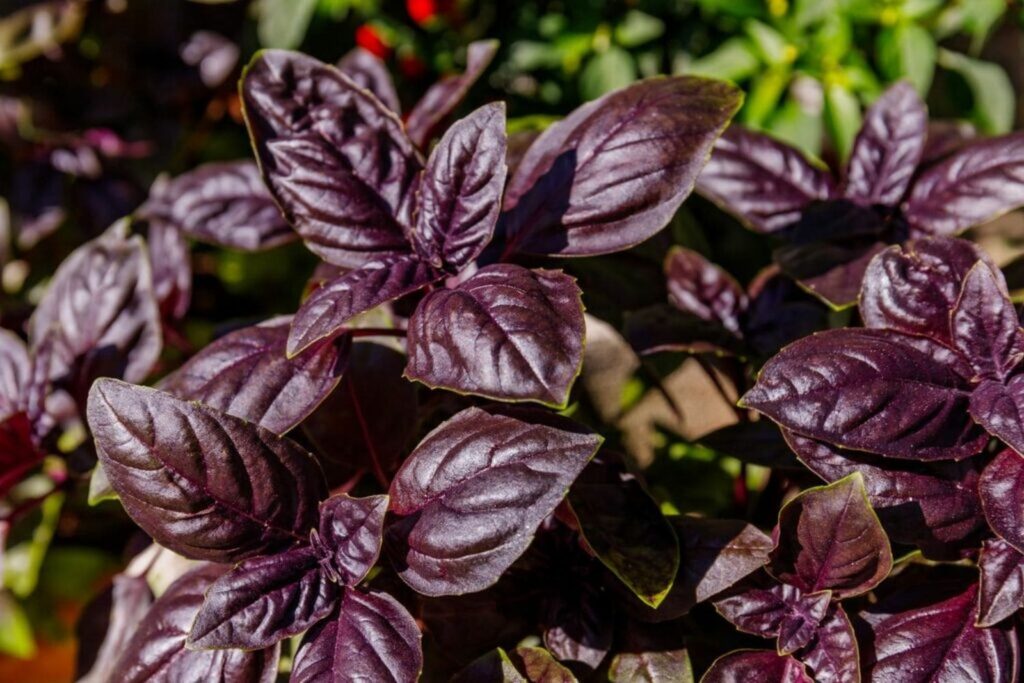
Image of purple basil.
| Factor | Information |
| Ease of Growth | Easy ●○○○○ |
| Scent / Fragrance | Rich, sweet aroma with a touch of spice |
| USDA Zone | Zones 9 to 11 |
| Height and Width | Grows up to 12 to 24 inches in height, 12 to 18 inches in width |
| Growth Rate | Moderate growth rate |
| Indoor or Outdoor | Suited for outdoor cultivation, can be grown indoors |
| Propagation | Propagated through seeds or cuttings |
| Possible Issues | Prone to mildew in humid conditions |
This basil variety boasts a rich, sweet aroma with a touch of spice. Its striking purple leaves add a visual and aromatic element to dishes.
Cinnamon Basil (Ocimum basilicum ‘Cinnamon’)
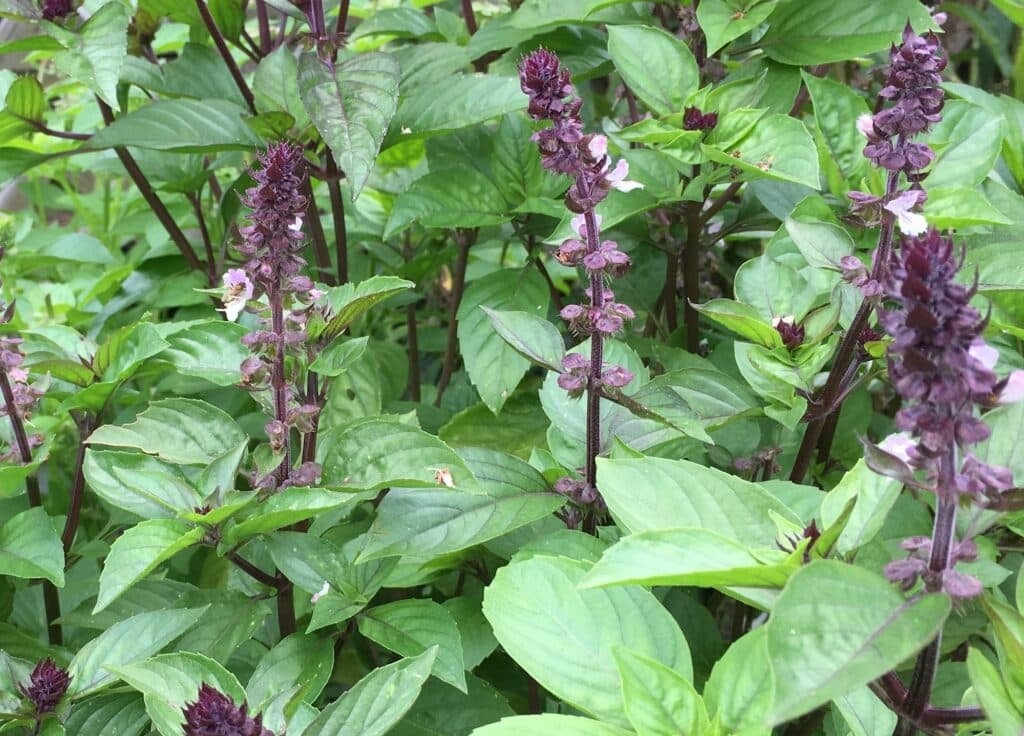
| Factor | Information |
| Ease of Growth | Easy ●○○○○ |
| Scent / Fragrance | Delightful cinnamon-like scent |
| USDA Zone | Zones 4 to 10 |
| Height and Width | Grows up to 18 to 24 inches in height, 12 to 18 inches in width |
| Growth Rate | Moderate growth rate |
| Indoor or Outdoor | Suited for outdoor cultivation, can be grown indoors |
| Propagation | Propagated through seeds or cuttings |
| Possible Issues | Generally pest-resistant, watch for common basil issues |
Cinnamon basil, as the name suggests, has a delightful cinnamon-like scent, making it a unique addition to desserts and teas.
FAQs
What is the strong-smelling basil?
The strong-smelling basil is often referred to as Holy Basil (Ocimum sanctum or Ocimum tenuiflorum). It has a robust aroma with hints of peppery and clove-like notes, which can result in polar reactions from different people.
Does basil have fragrance?
Basil has a distinct fragrance. Common basil varieties, like Sweet Basil (Ocimum basilicum), emit a sweet, slightly peppery scent with undertones of clove.
Why does basil smell minty?
Basil smells minty because basil and mint belong to the same plant family (Lamiaceae). This is why there are minty undertones in the fragrance of some basil varieties, especially when crushed or bruised.
Does dried basil have a smell?
Dried basil has a smell, although it’s generally less intense than that of fresh basil. This is because the drying process concentrates the herb’s flavor and fragrance.


